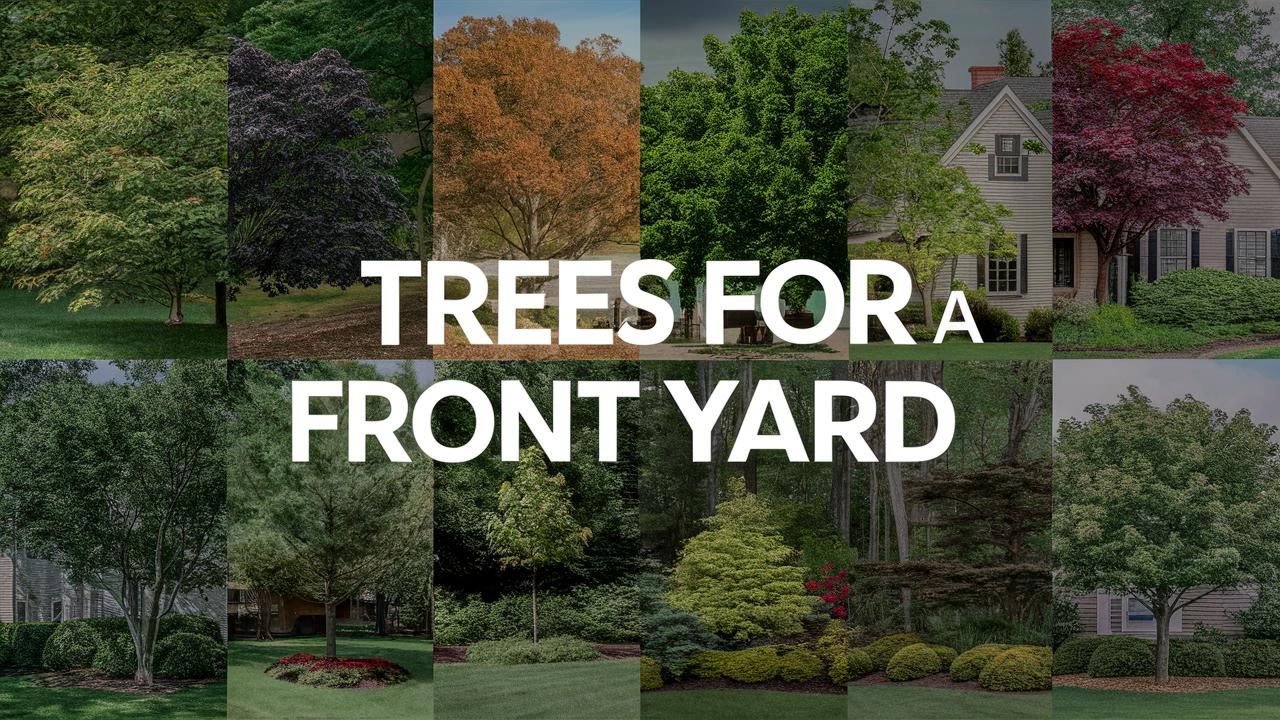In this guide, we will explore a selection of trees that are particularly well-suited for front yards, offering a blend of aesthetic appeal, seasonal interest, and environmental benefits.
Flowering Dogwood (Cornus florida)
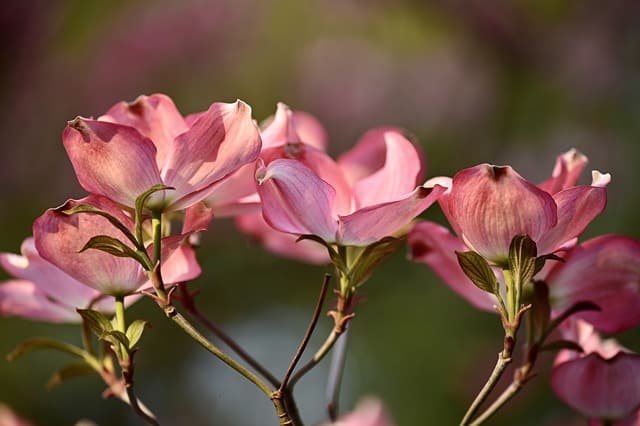
The flowering dogwood is a breathtaking addition to any front yard, known for its stunning blossoms in spring. The tree produces large, showy bracts that can range from white to pink, creating a dramatic effect against the fresh green backdrop of spring foliage. In addition to its spectacular spring display, the dogwood offers brilliant red berries in the fall, attracting various bird species and providing a vital food source.
Beyond visual appeal, the flowering dogwood is adaptable to a range of soil types and plays well with neighboring plants, making it an ideal candidate for mixed borders. Its moderate size, typically reaching 15 to 30 feet in height, allows it to fit seamlessly into smaller landscapes without overwhelming the space. Establishing one in your front yard not only boosts its beauty but also fosters local wildlife.
Paper Birch (Betula papyrifera)
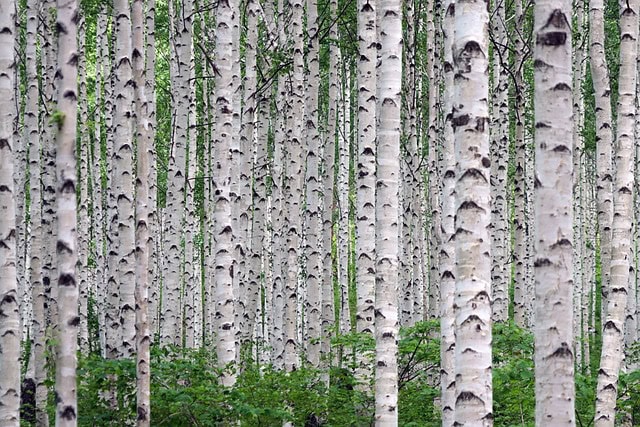
One cannot overlook the allure of the paper birch, often admired for its distinctive white bark that peels in layers, giving it a unique texture and visual interest year-round. This tree can grow up to 50 feet and thrives in moist, well-drained soils, making it an excellent choice for front yards with sufficient sunlight.
Come autumn, the foliage transforms into a golden-yellow hue, creating a vibrant contrast against its striking bark. As a member of the birch family, this tree is fast-growing and tends to attract a variety of wildlife, including birds and squirrels. Planting a paper birch not only enhances your front yard’s aesthetic appeal but also contributes to local biodiversity by providing habitat and food sources for wildlife.
Sugar Maple (Acer saccharum)
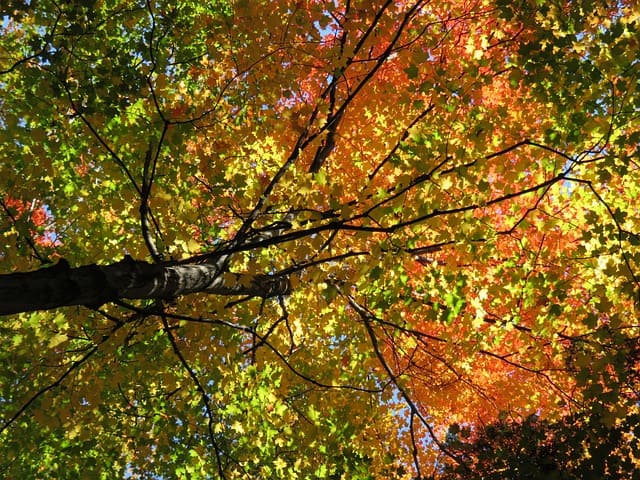
If you’re looking for a stunning display of fall color, the sugar maple is a standout choice. Known for its brilliant yellow, orange, and red foliage, this tree can reach heights of 60 to 75 feet, providing ample shade and a majestic presence in your front yard.
Beyond its beauty, the sugar maple is celebrated for its sap, which is harvested to produce maple syrup. This connection to local food production adds an interactive element to your landscape, making it more meaningful. It’s also a hardy tree, adaptable to various soil types, and it promotes soil health through its extensive root system. Planting a sugar maple encourages appreciation of nature’s cycles and connects residents with the tradition of mapling.
Colorado Blue Spruce (Picea pungens)
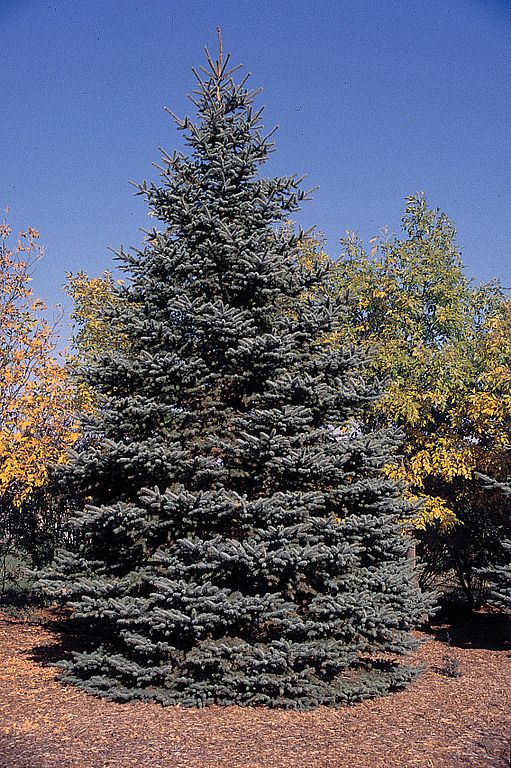
For those who appreciate evergreens, the Colorado blue spruce is an ideal front yard tree. This striking conifer features silvery-blue needles that create a stunning contrast throughout the year, remaining beautiful even in winter. Growing up to 75 feet tall, it serves as a fantastic specimen tree, commanding attention with its conical shape and robust stature.
In addition to its aesthetic benefits, the Colorado blue spruce provides excellent wildlife habitat, offering shelter for birds and small mammals. Its ability to thrive in less-than-ideal soil conditions further enhances its suitability for different front yard environments. The blue spruce not only lends elegance to your landscape but also fosters a sense of tranquility.
Emerald Green Arborvitae (Thuja occidentalis)
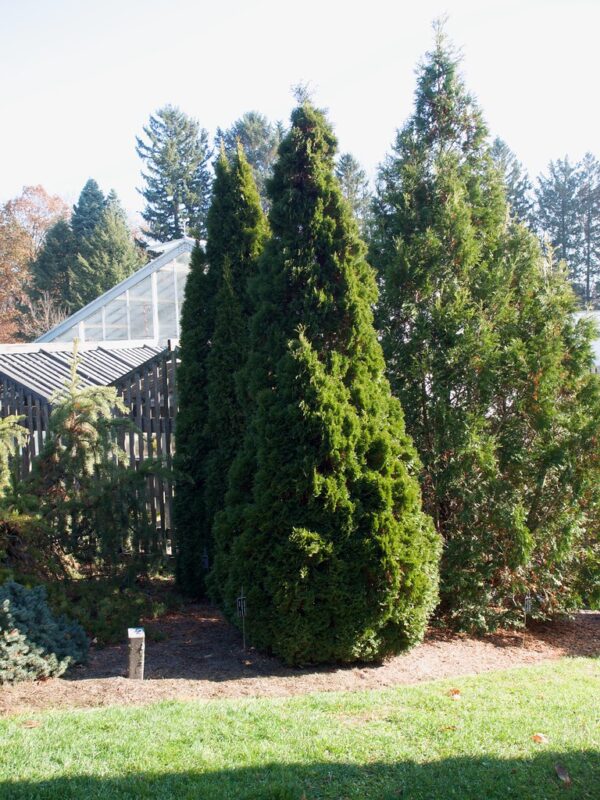
If privacy is a priority for your front yard, the Emerald Green Arborvitae is an excellent option. This evergreen tree grows up to 15 feet tall and forms a dense, narrow pyramidal shape, making it perfect for use as a natural privacy screen or hedge. Its vibrant green foliage adds a lush backdrop that enhances the beauty of your home.
Beyond its practical applications, the Emerald Green Arborvitae is easy to maintain, requiring very little pruning. It’s resistant to many pests and diseases, making it a strong choice for novice gardeners and seasoned green thumbs alike. This tree not only serves a functional purpose but also contributes to the overall aesthetics of your front yard.
Magnolia (Magnolia dodecapetala)
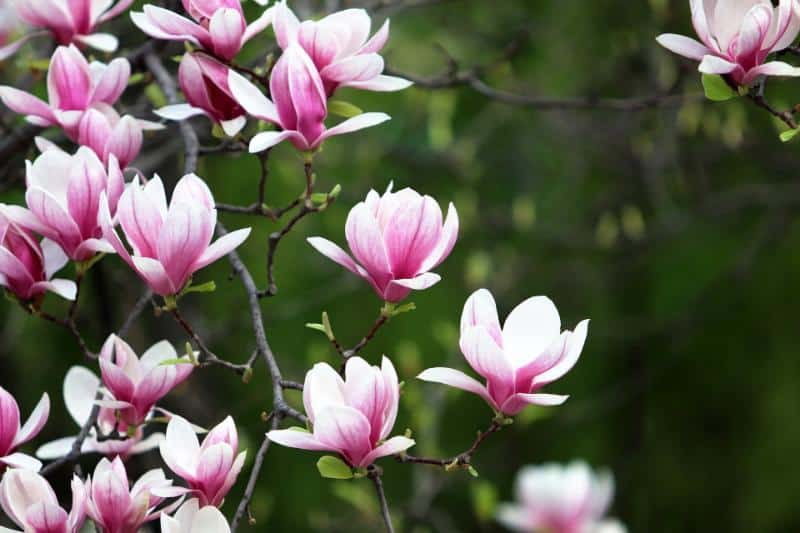
The magnolia tree is an iconic symbol of southern gardens, but it can thrive in various climates, offering grand, star-shaped flowers that are pure delights in spring. The dodecapetala variety features large, fragrant blooms that can reach up to seven inches in diameter, attracting pollen-loving insects and adding a sweet scent to your outdoor space.
Typically growing between 15 to 30 feet, the magnolia can be beautifully positioned near your entryway or as a focal point in your garden. Its glossy green leaves provide an attractive backdrop when not in bloom. The magnolia is more than just eye candy; it’s a cornerstone of an inviting front yard atmosphere.
Red Oak (Quercus rubra)
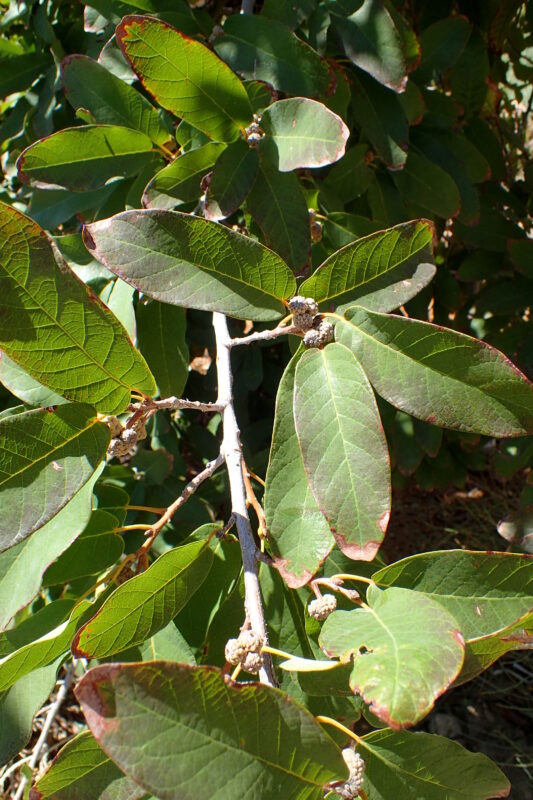
When it comes to classic trees, the red oak stands tall. Known for its impressive canopy, this tree can soar to heights of 60 to 75 feet and spreads up to 50 feet wide, providing plenty of shade for your front yard. Its vibrant fall color—deep red tones—adds a spectacular seasonal touch.
The red oak is also a highly beneficial tree for the local ecosystem. It produces acorns that serve as food for birds and mammals, fostering a sense of biodiversity right in your front yard. It’s a hardy species, tolerant of a range of soil conditions, making it perfect for diverse landscapes. With its grandeur and ecological contributions, a red oak is a timeless addition to any home.
Eastern Redbud (Cercis canadensis)
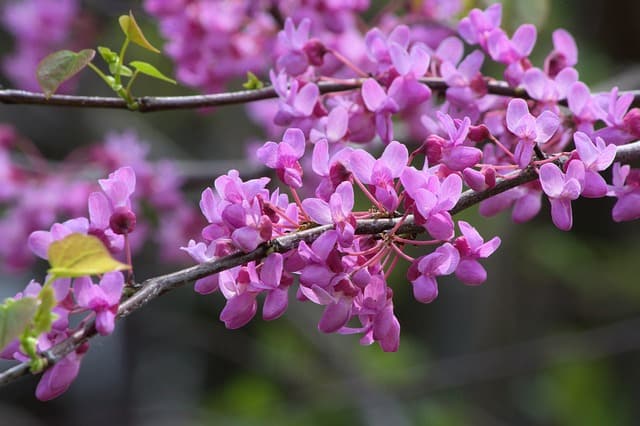
The Eastern redbud is a small to medium-sized tree that offers stunning pink to purple flowers in early spring before the leaves appear. This early showcase of color can brighten up your front yard and signal the arrival of warmer months. Typically growing between 20 to 30 feet, the redbud is particularly noteworthy for its broad, heart-shaped leaves that turn yellow in the fall.
This tree thrives in a variety of soil types and can adapt to different light conditions, making it user-friendly for gardeners. Its unique branching structure and beautiful flowers create an enchanting view, attracting butterflies to your yard and adding to its vibrancy. The Eastern redbud is perfect for those seeking to create an inviting and lively front yard space.
Tulip Tree (Liriodendron tulipifera)
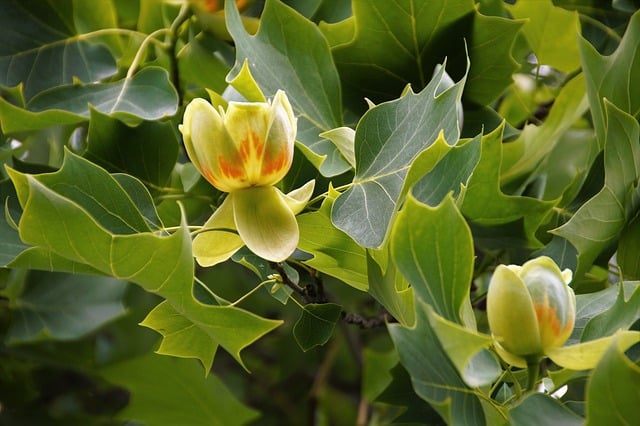
The tulip tree is a majestic addition to any landscape, reaching heights of 70 to 100 feet. Famous for its striking, tulip-shaped flowers that bloom in late spring, this tree not only offers beauty but also direct links to wildlife, as its blooms are a favorite of pollinators.
As a fast-growing tree, the tulip tree is excellent for those looking for quick shade. Its leaves are large, sweetly aromatic, and turn a lovely golden yellow in fall, adding to its seasonal appeal. Moreover, the tulip tree is important for local ecosystems, providing nesting sites and food sources for various species. Embracing this tree in your front yard means inviting nature’s wonders and elegance into your front space.
Japanese Maple (Acer palmatum)
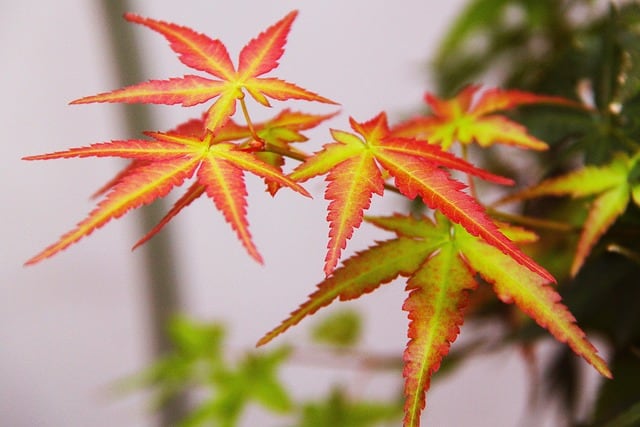
For a touch of graceful beauty, consider the Japanese maple. Renowned for its stunning foliage, this deciduous tree is often appreciated for its intricate leaf shapes and rich colors. Ranging from vibrant greens in spring to deep reds and purples in fall, the Japanese maple can be a showstopper in any front yard.
Typically growing between 10 to 25 feet, this tree is an exceptional candidate for smaller gardens as it provides striking visual interest without dominating the landscape. Japanese maples thrive in partial sunlight and can be expertly pruned to take on specific shapes or sizes, enhancing their unique character. By choosing to add a Japanese maple, you introduce elegance and tranquility to your outdoor space.
Crape Myrtle (Lagerstroemia indica)
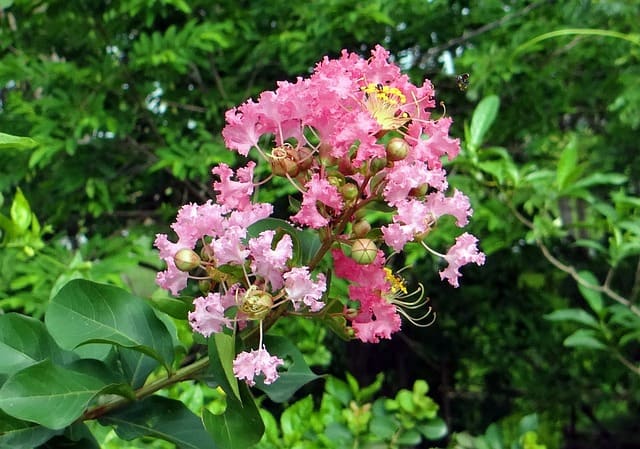
A favorite in southern landscapes, the crape myrtle is adored for its long-lasting blooms that grace gardens from summer into fall. The tree produces vibrant clusters of flowers in shades of white, pink, red, and purple, creating a joyful focal point in any front yard. This tree is adaptable, flourishing in a range of soil types and exhibiting good resistance to pests.
The crape myrtle can reach heights of 15 to 30 feet and can be shaped as a multi-stemmed or single-stemmed tree, providing versatility in design. Additionally, its smooth bark presents visual interest throughout the year. With a crape myrtle in your front yard, you can enjoy an extended season of colorful flowers that attract butterflies and hummingbirds, enriching your connection to nature.
Dwarf Alberta Spruce (Picea glauca)
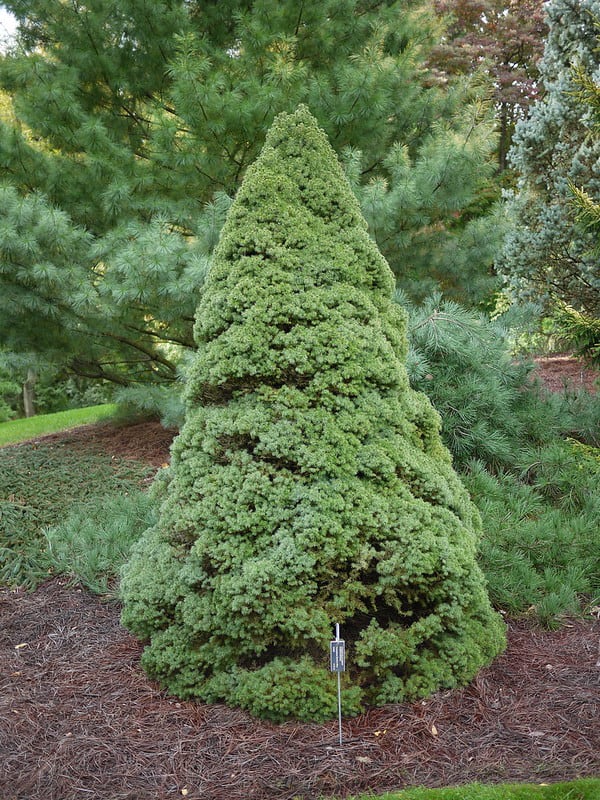
For a compact, evergreen option, the Dwarf Alberta spruce is ideal for front yards that require elegance within limited space. This slow-growing tree reaches a height of 3 to 10 feet, making it suitable for small gardens while retaining a classic conical shape. Its soft, dense foliage provides a lush green backdrop and can be an excellent accent near entryways or alongside pathways.
The Dwarf Alberta spruce requires minimal maintenance and ensures a year-round visual appeal without overwhelming the surrounding environment. Its size makes it a perfect candidate for seasonal decoration, such as string lights in winter or seasonal flower arrangements at its base. Bringing this tree into your front yard creates a cozy atmosphere without sacrificing style.
Japanese Maple (Acer japonicum)

Similar to its palmatum relative, the Japanese maple (Acer japonicum) is cherished for its beautiful foliage and elegant growth form. This variety typically has broader leaves that exhibit a stunning golden or reddish hue in the fall, capturing the quintessential feel of autumn. Depending on the cultivar, it can reach heights of 15 to 25 feet, making it approachable for various landscape designs.
The Acer japonicum is particularly admired for its graceful, twisting branches and ease of care. It thrives in partial shade, making it a perfect fit for burgeoning front yards with varying light levels. Adding this tree will undoubtedly create a serene environment where outdoor mindfulness can flourish.
Dwarf Chestnut Oak (Quercus prinoides)
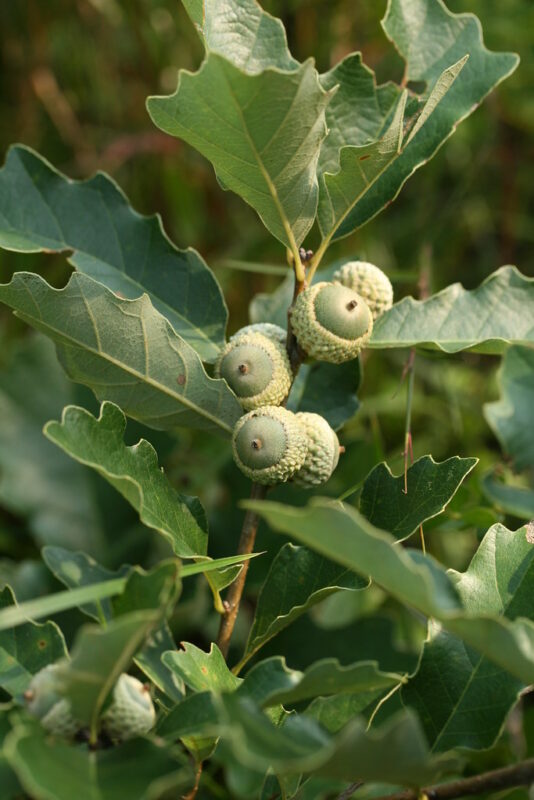
For a compact oak that fits neatly into smaller gardens, the Dwarf Chestnut Oak is a wonderful selection. This tree typically grows to a height of 15 to 30 feet, presenting broad, lobed leaves that transition beautifully to warm autumn colors. A unique characteristic is its acorns, which serve as a food source for various wildlife.
Despite its smaller stature, the Dwarf Chestnut Oak exhibits resilience against droughts and poor soil conditions. Its strong branching structure adds compatibility to windier sites, helping it thrive in diverse front yard climates. With its charming form and ecological benefits, this oak promotes a strong connection to local flora and fauna.
Hawthorn (Crataegus)
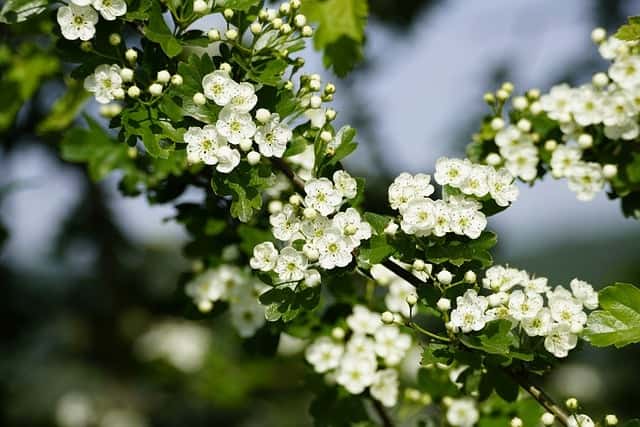
The hawthorn is a small tree that often graces traditional gardens with its delicate white blossoms in spring. It typically reaches heights of 15 to 30 feet, making it an ideal choice for intimate front yards. The hawthorn’s berries in the fall provide food for birds and other wildlife, promoting a rich biodiversity in your landscape.
What makes the hawthorn especially noteworthy is its hardy nature. It’s resistant to common pests and diseases and can thrive in a variety of soils. Being both attractive and practical, the hawthorn can bridge ornamental gardens with functional spaces, where beauty intertwines with a robust natural community.
Redbud (Cercis canadensis)

We’ve previously mentioned the Eastern redbud, but here’s another note on the general significance of redbuds—these trees present striking pink flowers and heart-shaped leaves, adding character and warmth to front yards. Quick to bloom in spring, redbuds create a beautiful transition through seasons, showcasing color shifts that capture the joy of nature’s cycles.
Suitable in various environments, redbuds grow between 20 to 30 feet and can flourish in partial shade, appealing to gardeners with diverse spatial needs. Choosing redbuds can create beautiful visual harmony in your landscape while supporting local pollinators who seek out their early blooms.
Saucer Magnolia (Magnolia soulangeana)
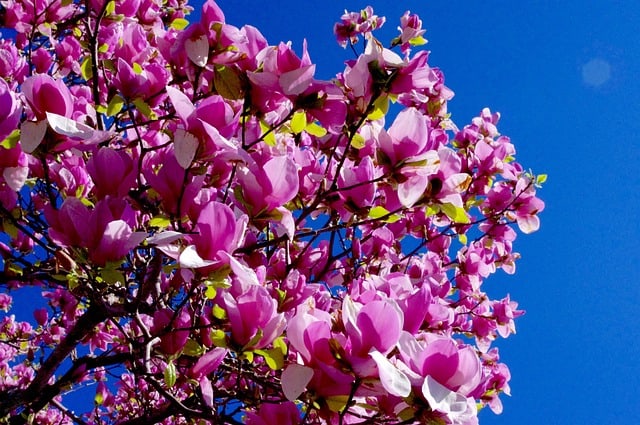
The saucer magnolia is a stunning specimen that offers an abundance of large, fragrant blooms in early spring. Characterized by its striking pink and white flowers, the saucer magnolia truly brings a sense of elegance to any front yard. This tree typically reaches heights of 20 to 30 feet and presents a lovely oval shape that adds architectural interest.
Its broad, marbled leaves provide ample shade during the summer months, making it a comfortable gathering spot for outdoor activities. The saucer magnolia is relatively easy to grow, appreciating well-drained soil and moderate moisture. By adding this majestic tree to your front yard, you’ll enjoy the striking beauty of spring’s first colors while creating a welcoming atmosphere for family and friends.
Carolina Silverbell (Halesia carolina)
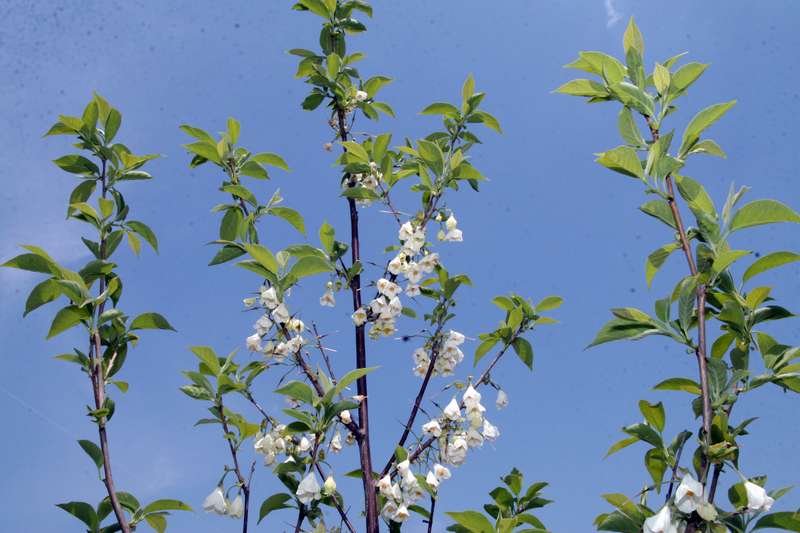
For something a bit different, the Carolina silverbell is a magnificent, lesser-known option that brings unique charm to your front yard. This tree produces hanging, bell-shaped white flowers in spring that create a whimsical display. It generally grows to a height between 30 to 40 feet and is praised for its ornamental appeal and ability to thrive in acidic soils.
With its attractive form and seasonal interest, the Carolina silverbell appeals to those who want a distinctive feature in their landscapes. Its ability to attract hummingbirds and other pollinators enriches the local ecosystem, and its delicate blossoms can inspire a sense of joy and wonder in your outdoor space.
Chaste Tree (Vitex agnus-castus)
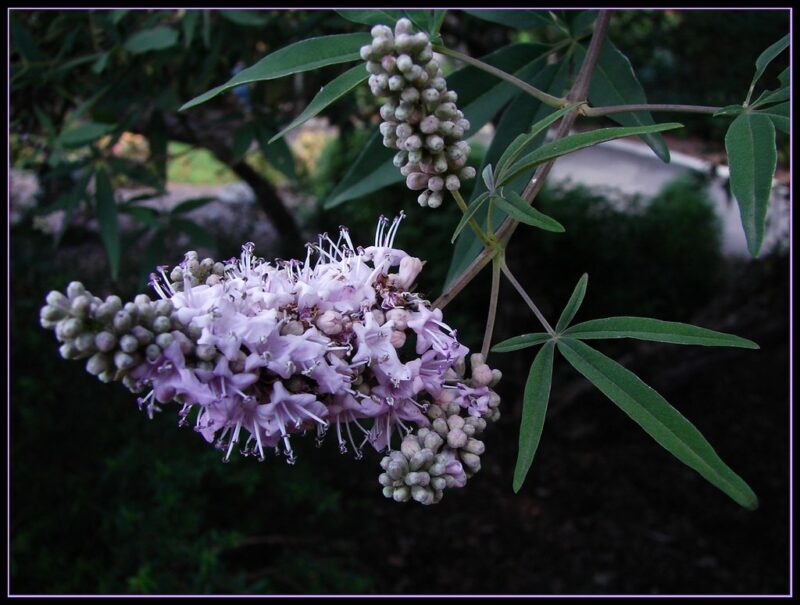
The chaste tree is a delightful addition that offers beautiful lavender-blue flowers from late spring to summer. Growing between 12 to 30 feet, this tree provides lush foliage alongside sweet-smelling blooms that attract pollinators throughout the blooming season. It thrives in full sun and is highly tolerant of drought, making it a low-maintenance choice for busy homeowners.
Beyond its beauty, the chaste tree has interesting historical significance, as it was used in ancient civilizations for its medicinal properties. Today, it serves as multifunctional landscaping—perfect as a specimen tree or in border plantings, creating a fragrant and colorful front yard display.
Japanese Snowbell (Styrax japonicus)
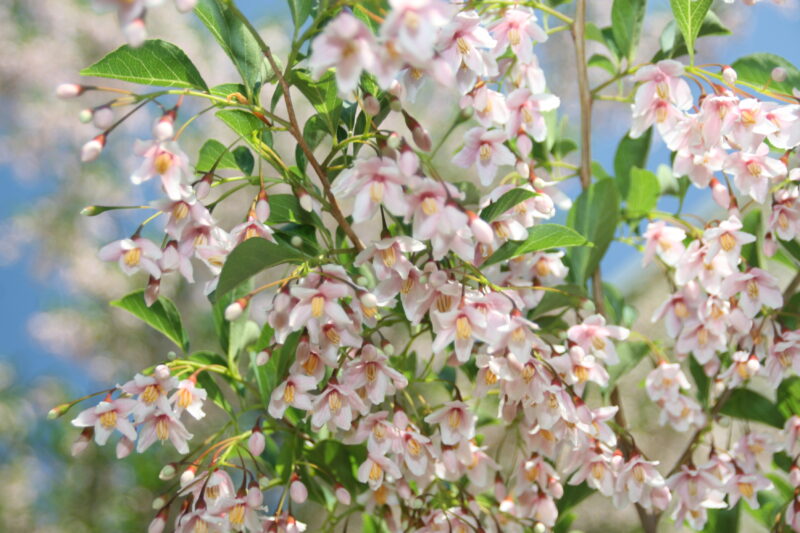
The Japanese snowbell is a beautiful small tree adorned with fragrant white flowers that look like delicate bells. It typically grows 20 to 30 feet tall, fitting seamlessly into smaller spaces. Beyond its visual appeal, this tree is known for its graceful habit and lush green foliage, providing shade and elegance.
The snowbell flourishes in well-drained, slightly acidic soils, catering to gardens that would benefit from a unique flowering specimen. Enjoying the sweet scent of this tree in early summer can invigorate your outdoor space and foster connections with nature, inviting creatures of the earth to your front yard.
Golden Chain Tree (Laburnum)
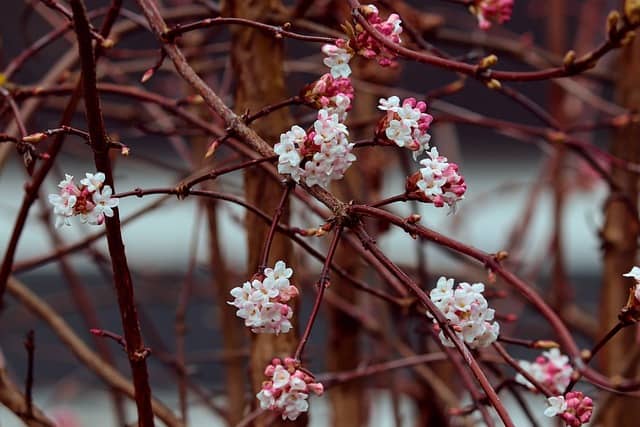
The golden chain tree is often remembered for its stunning displays of cascades of yellow flowers in late spring. This tree, which can reach heights of 20 to 30 feet, draws the eye with its elegant shape and long hanging flower clusters that bring a fairy-tale charm to any front yard.
While its beauty is captivating, it’s essential to remember that the golden chain tree is toxic if ingested. Care should be taken when planting it near areas frequented by pets or children. However, with its stunning beauty and captivating fragrance, this tree can make any garden feel like a hidden oasis, especially as the sunlight filters through its vibrant blooms.
Wintersweet (Chimonanthus praecox)
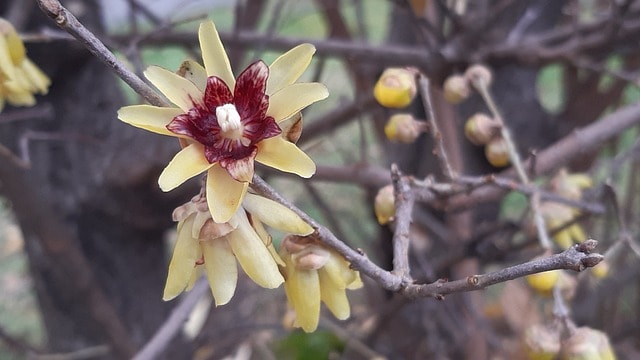
Wintersweet is a unique find for winter gardens, boasting fragrant yellow flowers in late winter to early spring before the leaves appear. This small tree grows about 6 to 10 feet tall and will intrigue garden enthusiasts with its surprising blooms amidst the winter landscape. It’s an ideal specimen for front yards that wish to maintain interest year-round.
Moreover, the scent of wintersweet flowers can evoke memories and stir emotions, making this tree quite special for creating a memorable outdoor space. Its hardiness in various soil types allows it to thrive in diverse environments, ensuring that beauty can endure throughout the changing seasons.
Crape Myrtle (Lagerstroemia indica)

Revisiting the beloved crape myrtle, it deserves a place in any discussion about front yard trees. With its long-lasting blooms during the summer and incredible bark that peels beautifully, the crape myrtle works double duty as a visual delight. Enjoying the rich palette of colors this tree offers, it creates a warm, inviting atmosphere for those passing by.
Because of its versatility in size and varying flower colors, the crape myrtle can complement any architectural design. Planted alone or grouped, it ensures that your front yard remains vibrant and alive throughout the growing season. Choosing a crape myrtle means celebrating the beauty of summer days while inviting butterflies and hummingbirds to your outdoor space.
Serviceberry (Amelanchier alnifolia)

Serviceberry is a lovely small tree that offers seasonal interest throughout the year. In early spring, it bursts into white blooms, resembling snowflakes, that delight passersby. As the season progresses, the tree produces small, sweet berries in the summer that are edible and favorite treats for birds.
Growing to a height of about 15 to 25 feet, the serviceberry fits comfortably into many front yard spaces. It’s relatively easy to grow and adaptable to various soil conditions. Its multi-season appeal makes it perfect for anyone looking to create an engaging garden environment, enhancing not only aesthetics but also community wildlife.
Japanese Camellia (Camelia Japonica)

For those who enjoy lush blooms, the Japanese camellia is a standout choice, offering a breathtaking display of flowers in various colors, including soft pink, vivid red, and pristine white. It thrives in the cooler seasons, bringing life to your front yard during winter and early spring when most other trees remain bare.
The camellia grows modestly to about 6 to 12 feet, making it a suitable choice for smaller gardens and providing versatility in landscape design. With its evergreen foliage and glossy leaves, this tree offers year-round visual interest. Bringing a Japanese camellia to your front yard creates an elegant focal point and a source of fragrant beauty.
Royal Star Magnolia (Magnolia stellata)
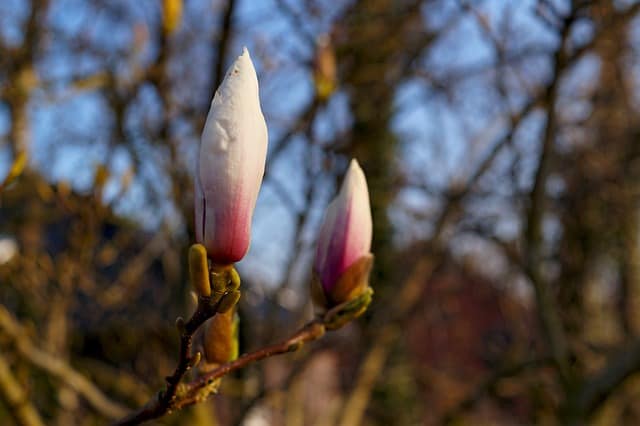
The Royal Star Magnolia is cherished for its delicate, star-shaped flowers that bring delicate beauty to your front yard in early spring. With its compact growth habit, reaching heights of 15 to 20 feet, it’s an exceptional choice for smaller spaces needing an extra touch of visual interest.
Its fragrant blooms are typically white or light pink, attracting pollinators and providing a seasonal delight. This tree’s resilience to various soil types allows for easy placement and maintenance. When you plant a Royal Star Magnolia, you’re inviting a whisper of spring into your space well before the bustling garden season begins.
Banana Shrub (Michelia figo)
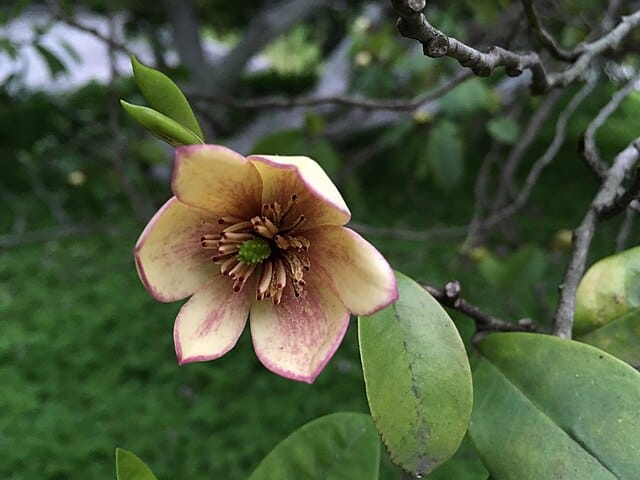
The banana shrub is an uncommon yet captivating choice for your front yard, celebrated not just for its unique banana-like scent but also its lush, evergreen foliage. This shrub grows modestly to 6 to 10 feet and blooms intermittently throughout the year, offering creamy yellow flowers that can uplift any landscape.
Thriving in partial shade, the banana shrub is perfect for front yards that may not receive full sun. Its sweet aroma lingers in the air, welcoming visitors and creating a soothing environment. Planting this shrub will elevate the sensory experience of your garden, adding both fragrance and a touch of whimsy.
Royal Purple Smoke Tree (Cotinus coggygria)
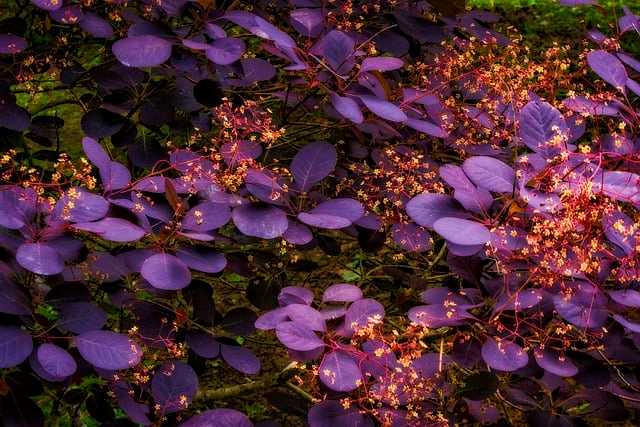
The Royal Purple Smoke Tree is a stunning, eye-catching specimen that promises to steal the show in any front yard setting. It features lush, deep purple foliage that creates vivid contrasts against traditional greens and blooms in the summer with unique, fluffy clusters that resemble smoke puffs, adding an ethereal quality to your landscape.
Growing to about 10 to 15 feet, this tree does well in various soils and thrives in full sunlight. Its dramatic appearance and bold colors not only beautify your front yard but also create visual intrigue that can provoke conversations. Choosing a Royal Purple Smoke Tree means infusing your landscape with an aura of creativity and flair.
Fringe Tree (Chionanthus virginicus)
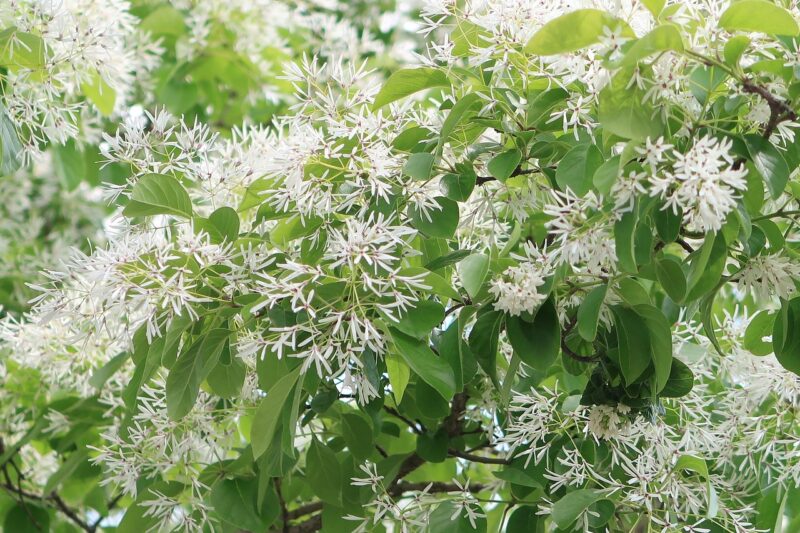
The fringe tree is an enchanting specimen that graces gardens with its long, lacy flowers in late spring—creating an effect reminiscent of wispy clouds dancing on a breeze. Typically growing to 30 feet, the fringe tree emits an intoxicating fragrance, drawing in wildlife and creating a delightful atmosphere.
This tree is adaptable to different soils and is moderately drought-tolerant, complementing various front yard designs. Its unique flowers and structure add texture and depth to your landscape. By planting a fringe tree, you’ll invite a whimsical touch while promoting a lively environment for pollinators and visitors alike.
Powder Puff (Calliandra haematocephala)
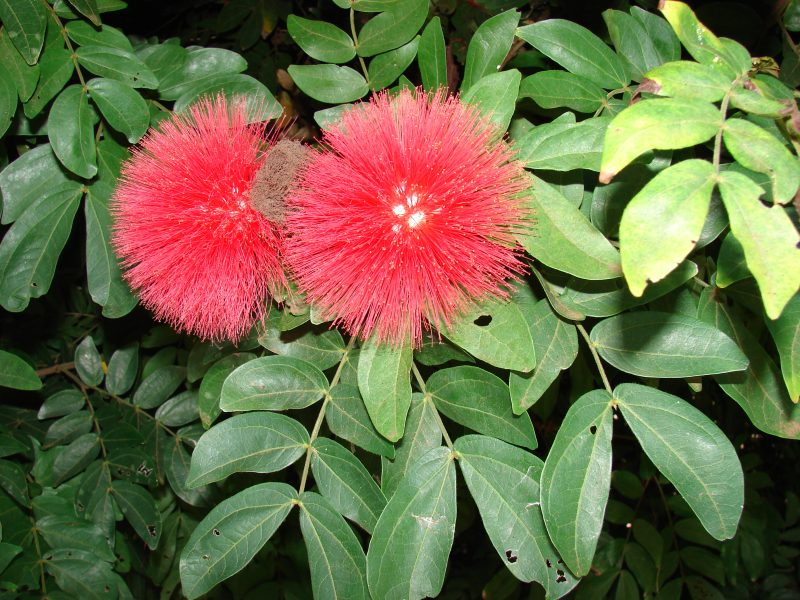
Finally, the Powder Puff tree brings tropical flair to your front yard with its eye-catching fluffy, pink flowers that bloom throughout the summer months. This small, ornamental tree generally reaches a height of 5 to 15 feet and thrives in warm climates, making it perfect for creating that lush, vacation-like atmosphere right at home.
Aside from its visual appeal, the Powder Puff tree is a favorite of hummingbirds and bees, encouraging biodiversity in your front yard. Its rounded shape and vibrant blossoms offer character and charm, inviting admiration from anyone who passes by. This tree can transform an ordinary home into an exotic retreat, adding beautiful surprises to your outdoor space.


